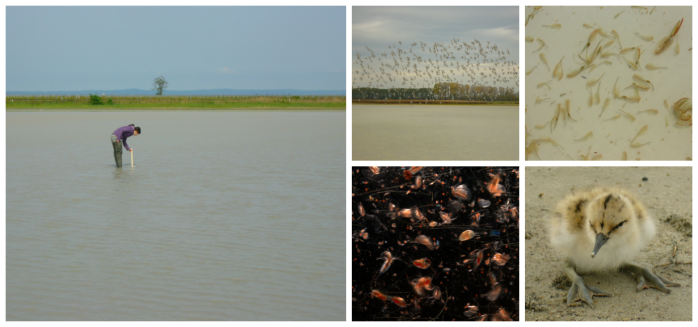We have open calls for MSc thesis and short-term research topics in the project!
Vogelwarte Madárvárta 2
Work Package: Interplay between aquatic birds and plankton communities
Funding: EU, Interreg V-A Austria-Hungary (Vogelwarte Madárvárta 2 – Grenzüberschreitende Koordination der ökologischen Monitoringaktivitäten in den NATURA 2000 Gebieten der Neusiedler-See und Hanság)
Our project partners:
- Fertő – Hanság National Park, Hungary (Lead Partner)
- Neusiedler See – Seewinkel National Park, Austria
- Biological Station Neusiedler See, Austria
Project leaders of the work package in WasserCluster: Zsófia Horváth, Robert Ptacnik
Main project collaborators: Thomas Zechmeister (Biological Station Neusiedler See), Emil Boros (MTA ÖK Balaton Limnological Institute), Michael Dvorak (BirdLife Österreich), András Ambrus (Fertő – Hanság National Park), Attila Pellinger (Fertő – Hanság National Park), Harald Grabenhofer (Neusiedlersee – Seewinkel National Park)

Project summary:
The VOGELWARTE MADÁRVÁRTA 2 project is a trans-boundary Interreg project between Austria and Hungary, where the project partners cooperate in monitoring protected areas and species and carry out research serving as a basis for management and habitat restoration.
Within the project, our team leads a work package dealing with the interaction between waterbirds and soda pans.

Astatic soda pans are important natural heritage sites of Europe, which are unique to the Carpathian Basin (eastern Austria, Hungary, northern Serbia). They are listed as priority habitats in the Natura 2000 network of the EU. They are seriously threatened ecosystems, with a habitat loss of 80% in the last 150 years. Seewinkel in eastern Austria with its relatively tiny area hosts 25% of all the remaining soda pans and therefore has a key role in the long-term conservation of these ecosystems. Crustacean invertebrates mean high quality food for waterbirds. Among all aquatic habitats worldwide, soda pans produce the highest crustacean biomass, which makes them particularly important as stopover-sites for migrating birds. While we know that soda pans represent an outstanding resource especially for migrating birds, we are unaware how the food web functions. Our sub-project aims at achieving a general understanding of the trophic pathways from primary production up to the birds. Understanding the functioning of an ecosystem is mandatory for its protection and we currently miss crucial knowledge about the basis of a food web and how it contributes to an important ecosystem service (sustaining large flocks of migratory birds). This also has crucial implications for habitat restoration plans.
